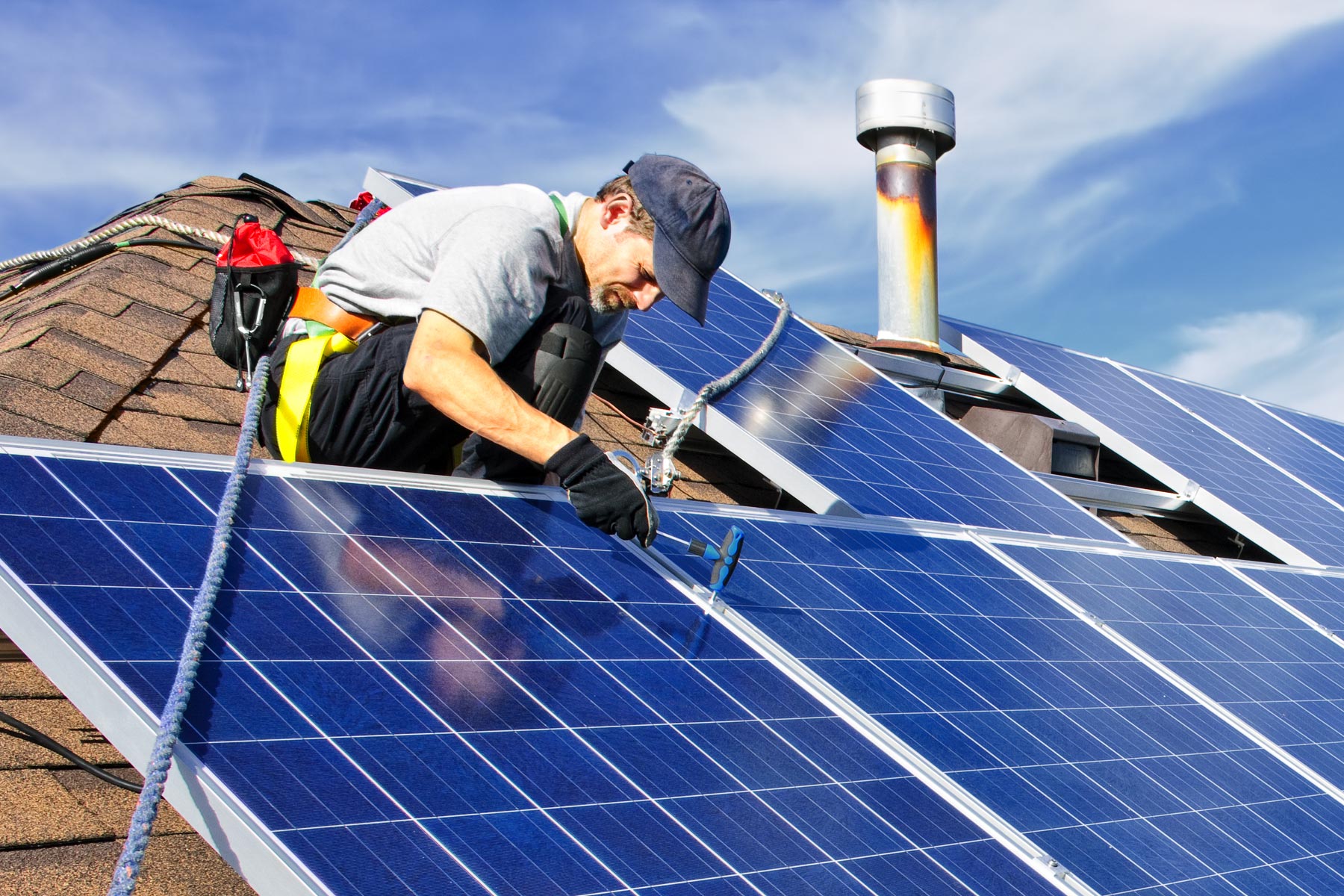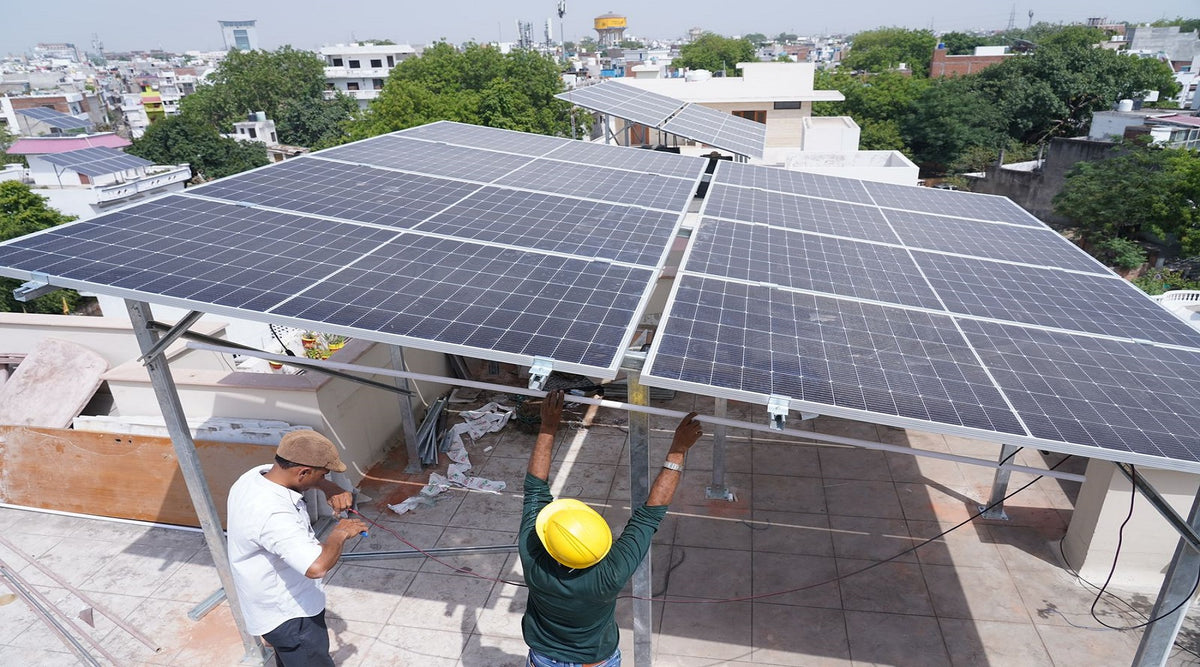Commercial Solar Installation: Perks of Solar Panel Installation for Property Owners
Solar Panel Installers Near Me: Home Roof Photovoltaic Systems Are An Excellent Way To Minimize Energy Bills And Promote Sustainability
Installation Process and Requirements
Preparing Your Roofing for Solar Panels
Before the very first solar panel kisses your rooftop, a thorough inspection is vital. Envision your roofing as a blank canvas-- it should be durable and all set to welcome the change. Roofing age, product, and angle play pivotal functions. Have you ever went up to examine your shingles? This easy act can expose covert damage or weak points that might make complex installation. A well-prepared roofing system not just supports the panels but likewise guarantees durability and security.
Step-by-Step Setup
- Site Evaluation: Professionals analyze sunshine exposure, shading, and roof design to enhance panel placement.
- System Style: Customized solar selections are created to match your energy requirements and roof structure.
- Permitting: Needed authorizations are protected-- consider this as getting the green light from regional authorities.
- Mounting Installation: Racking systems are anchored securely to your roofing, all set to hold the photovoltaic panels.
- Panel Positioning: Panels are positioned and bolted down, lining up completely to capture optimum sunshine.
- Electrical Wiring: Panels connect to your home's electrical system through an inverter, transforming sunshine into functional energy.
- Inspection and Activation: Final checks make sure whatever functions perfectly before flipping the switch.
Essential Requirements for a Smooth Setup
- Structural Integrity: Your roof needs to support the weight of the panels and racking system, normally around 2-4 pounds per square foot.
- Sunlight Direct Exposure: Preferably, your roofing system should receive at least 6 hours of direct sunshine daily, complimentary from shading by trees or structures.
- Space Schedule: Adequate roofing area ensures enough panels can be installed to fulfill your energy objectives.
- Electrical Compatibility: Your home's wiring and electrical panel must accommodate the brand-new solar system securely.
What Can Go Incorrect-- and How to Prevent It
In some cases, even the best-laid plans can hit a snag. Photo a neighbor whose solar panels were installed without looking for roofing system leaks initially. Months later on, water damage surfaced, turning a financial investment into a headache. To avoid such mistakes, insist on an expert roof assessment and clear interaction with your installer.

Quick Checklist Before Setup
| Requirement | Why It Matters | Idea |
|---|---|---|
| Roofing Condition | Makes sure assistance and durability | Fix any damages ahead of time |
| Sun Direct exposure | Optimizes energy production | Cut nearby trees if required |
| Electrical System | Supports system integration | Seek advice from a licensed electrical expert |
| Permits | Compliance with regional policies | Start early to avoid hold-ups |
Does the idea of changing your roof into an individual power plant delight you? It should. With the right preparation and understanding of the setup procedure, turning sunlight into savings can be a smooth journey instead of a labyrinth of confusion.
Opening the Power: Why Residential Solar Panels Transform Homes
Envision awakening to sunshine streaming through your windows, understanding that those rays are fueling your whole home. Residential photovoltaic panels don't just capture energy; they harness a quiet revolution. But just what makes them a game-changer beyond the apparent savings on electrical power bills?
The Subtle Gains Beyond Cost Savings
Electrical energy bills plummet, yes, however the real magic lies deeper. Photovoltaic panel develop a buffer against the unforeseeable spikes in energy costs. Have you ever felt caught by soaring energy rates? Solar energy provides a kind of liberty, a financial shield that grows stronger each year. Plus, homes geared up with solar systems typically see an uptick in worth-- yet this isn't almost dollars. It's about owning a piece of the future.
Environmental Effect Woven Into Life
Every panel installed is a declaration, a quiet disobedience versus carbon footprints. Unlike conventional power sources that choke the air with toxins, solar power is a breath of fresh air-- literally. Think of the stories of neighborhoods as soon as shrouded in smog, now basking under clearer skies thanks to extensive solar adoption. This isn't simply technology; it's an environmental renaissance.
Professional Tips for Maximizing Solar Efficiency
- Position panels to record the sun's trajectory throughout the year, not simply peak hours.
- Regularly examine for shading from brand-new tree development-- shadows can significantly lower output.
- Think about integrating a solar battery to save excess energy for nighttime use.
- Enhance inverter settings to stabilize peak performance with durability.
Unanticipated Advantages That Typically Go Undetected
Sound pollution is another sly perpetrator in urban living. Solar panels run quietly, unlike generators or HVAC units that demand away. This subtle shift can transform your home environment into a sanctuary of calm. And what about strength? During grid failures, solar systems equipped with backup services can keep important devices humming, a modern-day lifeline when the unforeseen strikes.
Breaking Down the Investment: What to Anticipate
| Advantage | Impact | Long-Term Value |
|---|---|---|
| Energy Independence | Minimizes dependence on varying grid power | Stable and foreseeable energy expenses |
| Ecological Contribution | Lower carbon emissions | Supports sustainable living values |
| Home Worth Boost | Destination to eco-conscious buyers | Possibly higher resale price |
| Energy Efficiency | Optimizes household power use | Lowered waste and better resource management |
Is Solar a Fit for Every Home?
Not all roofs are equal. Some face structural restrictions or are shaded by surrounding structures. But before dismissing the concept, consider innovative mounting solutions like ground selections or solar shingles. Question your presumptions: can your home's orientation or roofing system angle be adjusted to welcome this technology? Frequently, the real challenge isn't physical-- it's the doubt to reassess energy habits.
Checking out the Spectrum of Residential Solar Panel Technologies
Ever stood beneath a solar panel, wondering how such a streamlined piece of innovation turns sunlight into usable energy? The answer lies in the distinct kinds of solar panels offered for property usage, each boasting its own quirks and performances. Picture a bright afternoon where the sun's rays strike a roofpaneled with monocrystalline cells, those deep black charms understood for their high effectiveness and durability. They whisper guarantees of robust energy output and a smooth appearance that matches contemporary homes.
Monocrystalline Solar Panels: The Elite Performers
Monocrystalline panels are crafted from a single silicon crystal-- consider it as the photovoltaic panel equivalent of a completely cut diamond. This purity makes it possible for electrons to flow easily, improving energy performance. Homeowners typically prefer these panels for their sleek, uniform look and superior performance in limited area. But, their production is energy-intensive, showing an interesting paradox: high output features a large manufacturing footprint. The reward is a panel that can quietly power your home for decades.
Polycrystalline Solar Panels: The Budget-Friendly Workhorses
Polycrystalline panels look like a mosaic of silicon pieces melted together, leading to a bluish hue with a speckled texture. They're less efficient than their monocrystalline cousins-- about 15-17% effectiveness compared to 20%+-- however their cost-effectiveness makes them appealing. If your roof stretches kindly, these panels might just be the useful, wallet-conscious option. If area is a high-end, the lower energy density may leave you longing for more.

Thin-Film Solar Panels: Flexibility in Focus
Thin-film technology breaks the mold, actually. These panels are lightweight, flexible, and can be integrated into non-traditional surface areas like curved roofing systems or perhaps windows. Their performance hovers around 10-12%, but their adaptability is unequaled. Image a home where photovoltaic panels mix effortlessly with architectural lines instead of sitting like bulky appendages. Solar Systems Near Me Nevertheless, the compromise lies in their fairly brief lifespan and the need for more area to gather the same quantity of energy as crystalline panels.
Secret Considerations When Picking Solar Panel Tech
- Roofing space: Restricted area favors greater efficiency panels like monocrystalline.
- Spending plan constraints: Polycrystalline provides a balance between expense and performance.
- Design versatility: Thin-film matches imaginative installations however demands more area.
- Climate elements: Some technologies deal with heat and shade much better than others.
Professional Tips for Optimizing Solar Innovation Selection
- Examine your roofing's orientation and shading patterns before choosing a panel type.
- Consider the destruction rate-- some panels lose efficiency much faster, impacting long-term output.
- Element in temperature coefficients; panels perform in a different way under heat tension.
- Don't overlook the inverter compatibility; matching panel technology with inverter type makes the most of energy harvest.
Have you considered how a minor tilt angle or panel positioning can influence your energy harvest? It's a subtle dance in between sunshine, technology, and architecture. Understanding these nuances changes an easy roof into a powerhouse of sustainable energy.
Environmental Effect and Energy Savings
Imagine the sun as a limitless reservoir of power, quietly waiting above to sustain your home. Residential solar panels use this vast ocean of energy, turning sunshine into electrical power without the usual baggage of contamination or carbon emissions. It's not practically slashing your electrical costs; it's about diminishing your carbon footprint to a nearly invisible speck.
But how deep does this environmental advantage run? Consider this: standard energy sources typically rely on burning nonrenewable fuel sources, which launch greenhouse gases that trap heat in the environment. Solar panels, by contrast, produce tidy energy quietly and gradually. Over their 25-30 year life expectancy, a typical domestic system can balance out a number of lots of CO.
2-- the equivalent of planting lots of fully grown trees.
Energy Savings: More Than Just Numbers
Energy savings from solar panels extend beyond the obvious month-to-month energy reductions. The genuine magic occurs when you comprehend the interaction in between usage routines and solar production:
- Peak sun hours align with daytime energy usage, minimizing dependence on grid power when electrical power is most pricey and carbon-intensive.
- Net metering permits excess electrical energy to recede to the grid, turning your roof into a small power plant and making credits.
- Energy storage solutions, such as home batteries, can save surplus solar energy, raveling supply throughout cloudy days or nighttime.
Subtle Subtleties That Matter
Have you ever wondered why two surrounding homes with identical solar setups report different cost savings? The angle of your roof, shading from trees, and even panel cleanliness subtly however considerably affect performance. A frequently ignored truth: even a thin layer of dust or pollen lowers output by up to 5-10%-- a small detail with a huge impact.
The ecological gains aren't just about clean energy. Production solar panels needs energy and products, but advances in technology now focus on lessening this "embodied energy." Panels made with recycled materials and longer life expectancies tip the scales even more in favor of sustainability.
Professional Tips for Making The Most Of Impact
- Enhance panel orientation and tilt to catch the maximum sunshine based upon your geographical location.
- Incorporate smart home energy management systems to synchronize energy use with peak solar production.
- Regularly examine for shading changes triggered by brand-new foliage growth or construction, which can calmly wear down performance.
- Think about incorporating solar with energy-efficient home appliances to amplify overall savings.
| Element | Influence On Energy Savings | Environmental Implication |
|---|---|---|
| Panel Effectiveness | Directly proportional to energy output | Greater effectiveness reduces land and resource use |
| Shading | Can lower output by approximately 25% | Less tidy energy produced, more grid reliance |
| System Size | Figures out potential energy generation | Oversizing can waste materials; undersizing limitations cost savings |
| Energy Storage | Enhances self-consumption | Lowers need for fossil fuel backup power |
Photovoltaic panel do more than power homes-- they weave a story of resilience, development, and ecological stewardship. They welcome homeowners to ask themselves: How much am I happy to purchase a future where tidy energy is the norm, not the exception?